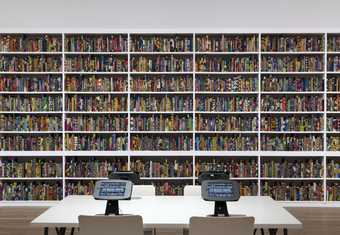This display tells the story of the Artists’ International Association, from its foundation in 1933 to the mid-point of the Second World War
In 1933, a group of young, underemployed artists and designers created a new organisation at a time of political and economic crisis.
Two years later, after winning the support of Augustus John, Henry Moore, Paul Nash and Laura Knight, they organised Artists against Fascism and War, in Soho Square, London.
With a membership nearing 900, the Artists International Association convened the First British Artists Congress in 1937, an event that foreshadowed many elements of official post-war arts policy.
The AIA mounted For Liberty in 1943 on the John Lewis bombsite in Oxford Street. This was an exhibition uniting artists of many aesthetic persuasions behind the call for an imaginative peace.
After the Second World War, the AIA focused on the role artists could play in reconstruction and many of its members subsequently contributed to the 1951 Festival of Britain.
The Cold War era brought further political division and organisational challenges but the AIA was reinforced by a sizeable new generation of artists and activists including Paul Hogarth, Gillian Ayres, John Berger and Diana Uhlman, the original secretary of the Artists’ Refugee Committee.




